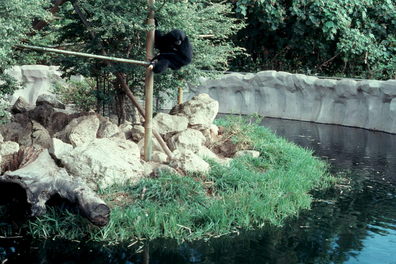 =0=
=0=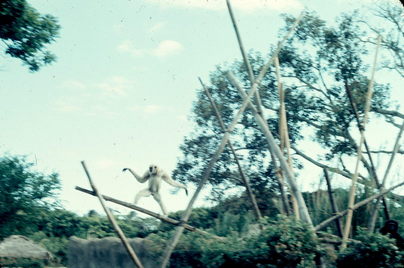 =0=
=0= =0=
=0=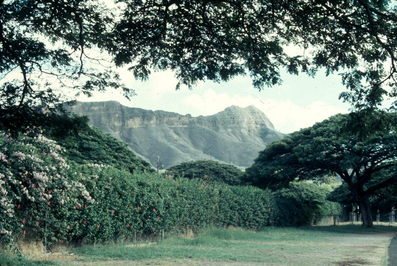 =0=
=0=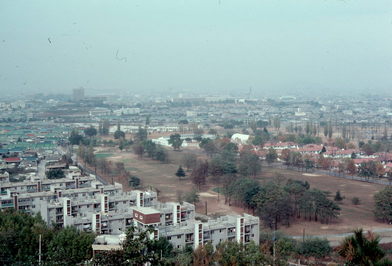 =0=
=0=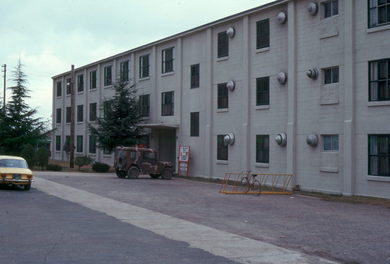 =0=
=0=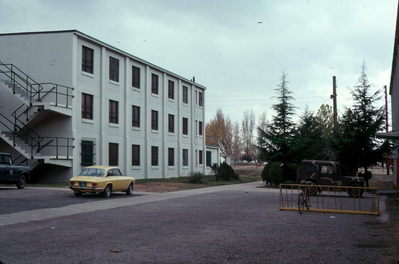 =0=
=0= =0=
=0=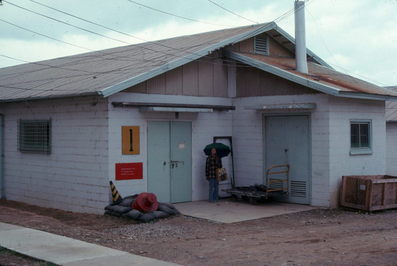 =0=
=0=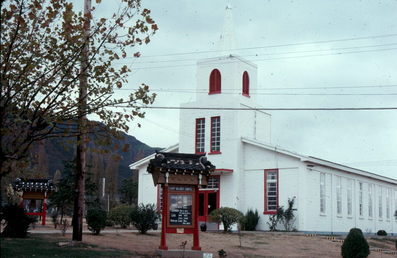 =0=
=0= =0=
=0=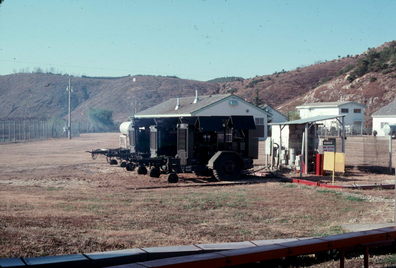 =0=
=0=| The most common type of enclosure (and our favorite) were islands like shown here with monkeys playing on their island. |  =0=
=0= |
| Here is another island, this one occupied by gibbons. |  =0=
=0= |
| This slide was the last slide on a roll and so came out discolored. However, it showed one of their most intriguing enclosures, a people island. Doesn't that one look a little sinister, perhaps even hungry. Oh my, we better move on promptly! ;-) |  =0=
=0= |
| This was our last slide in Hawaii. It is a nice view from the zoo. The zoo was pretty park like in appearance. From Hawaii we flew to Tokyo, Japan. We stayed the night there and they provided a hotel. In Korea at that time there was a curfew from midnight to 4AM and you weren't allowed to be out and about at that time. So, an arrival in Seoul at 10PM would not be good as that would give only two hours to get through customs and get to your hotel. This was in 1977 and S. Korea was under President Park then who had a reputation of being a totalitarian dictator (though we never saw any of that). |  =0=
=0= |
| In the morning we flew to Seoul and after a little in processing then headed to Daegu where I was stationed. This is a view of Camp Walker (the open area with trees and such) which is surrounded by Daegu. Daegu has a population of about 1.5 million, but is quite compact, all fitting in a diameter of about 10 or 15 miles. Camp Walker is like a little America with all the amenities such as a commisary (for getting Amreican foods), and PX (for manufactured stuff), movie theater, and hamburger and pizza places. That is one of the nice things about travelling with the military is that if you get home sick, there is a little bit of America on base. When you feel like exploring again, the other culture is just a short walk away. Of course, you do need to appreciate the other culture as the base is quite limited if you don't get out and about. |  =0=
=0= |
| This is the main building for the 169th Signal Company where I was the Operations Officer. The jeep out front is the one I would ride in if I needed to go anywhere. The Korean nationals would do all the menial cleaning and maintenance work and they would arrive on their bicycles. We had a few ROK (Republic of Korea) soldiers assigned to our unit and so there was a ROK soldier to drive the jeep. The offices were on the first floor just to the left of the entrance by the jeep. I was the Operations Officer, and my office was on the side closest to the jeep and closest to the entrance. The only other officer in the company was the company commander and his office was just opposite mine on the other side of the building. The rest of the building was barracks. They were actually pretty nice barracks in that they were separate rooms, two soldiers per room. Pretty much like dorms at school. |  =0=
=0= |
| When I first arrived I got a little flak as I had brought my wife. I was assigned to fill a billet with 36th Signal Brigade which was headquarterd in Pyong Taek, a much smaller city (more like town). Daegu is the thrid largest city in Korea and is south of Seoul (the largest city) on the way to Pusan (the second largest) which is way far south and on the coast. Pyong Taek is just a little south of Seoul and didn't have nearly the amenities. My assignment was a short tour (one year) and so the Army did not make arrangements for my dependents (Barbara in my case) to come with me. However, as a U.S. citizen she could travel to Korea and did. They decided to assign me to Daegu as she would be more comfortable there, which was nice of them. This slide is of the building right next to the 169th (see the jeep from above) and was the headquarters of the 293rd Signal Company. They didn't have nearly as many barracks and such as they ran the microwave towers on the hilltops in the area and so their soldiers were mostly stationed out on the hillsides. The 169th had the telephone exchanges, phone plant (cables and such), communications center, MARS (radio station), switch, and satellite station in the Daegu area. |  =0=
=0= |
 =0=
=0= |
|
| This is the supply room of the 169th and is just behind the main building. As there were really only two officers in the 169th (there was also one assigned to the switch, but that was an ultra-top secret billet and he was devoted to the switch) and I was the junior officer, I basically did whatever the Company Commander didn't want to do. That meant I was the supply officer and was signed (responsible) for about $13 million. Sounds pretty awful, but most of it was buildings (like these two) which clearly aren't going anywhere and all the little stuff was signed to different individuals. However, keeping all the paperwork straight took a lot of time and that is where I spent most of time. Barbara is in front with an umbrella which was necessary in Daegu as it seemed to rain a lot. |  =0=
=0= |
| This is the chapel at Camp Walker and was just behind the 169th and a little further in the direction of the 293rd across the street back there. Camp Walker had a little bit of everything of America and so the chapel was an American church, but very generic. Barbara visited there quite a lot. Up the hill from the plain (Camp Walker was centered around a small airfield) was the BOQ (Bachelors Officer Quarters) which had a pretty good hamburger/pizza place with good pizza (best in Daegu). Those phone cables in the picture belonged to the 169th. Many of our older cables were lead cased with paper insulation and were really awful in the rain. We were replacing them with that new fangled plastic cased and plastic insulated cables which were much more reliable (and less polluting to boot). |  =0=
=0= |
| Most of the 169th facilities were scattered around the two main camps in Daegu (Camp Henry and Camp Walker), but the sattelite station was in Song So (pretty much surrounded by farms and in the middle of no where). Here is the 'golf ball' which housed the sattelite antenna. There were about twenty soldiers stationed out there to run the satellite station. Can you imagine that many people to run a satellite station that only carried about 12 voice channels? Electronics really have improved since 1977. They had a pretty good mess hall out there so it was a nice place to visit and on weekends they would hijack an unused voice channel and patch calls through back to the U.S. so we could visit with family and such. Not really a problem as the system was staffed 24 by 7, but there wasn't much real business traffic on holidays as most everyone else was home with their families. The sattelite station was pretty high profile as it was one of two links back to the U.S., the other being microwave connections to Japan and back to the U.S. from there. |  =0=
=0= |
| These are the three 300KW generators which were used for backup power in the event that the regular Korean electricity was out. That was a suprisingly common event. In this picture you can also see a little of the environment at Song so as it was surrounded by rice fields on three sides and a pig farm on the remaining. The rice fields were quite small and tended through much hand labor. They would also terrace the hillsides with tiny fields, most any speck of land that they get level. |  =0=
=0= |
| . |
This page was last updated on September 18, 2009.